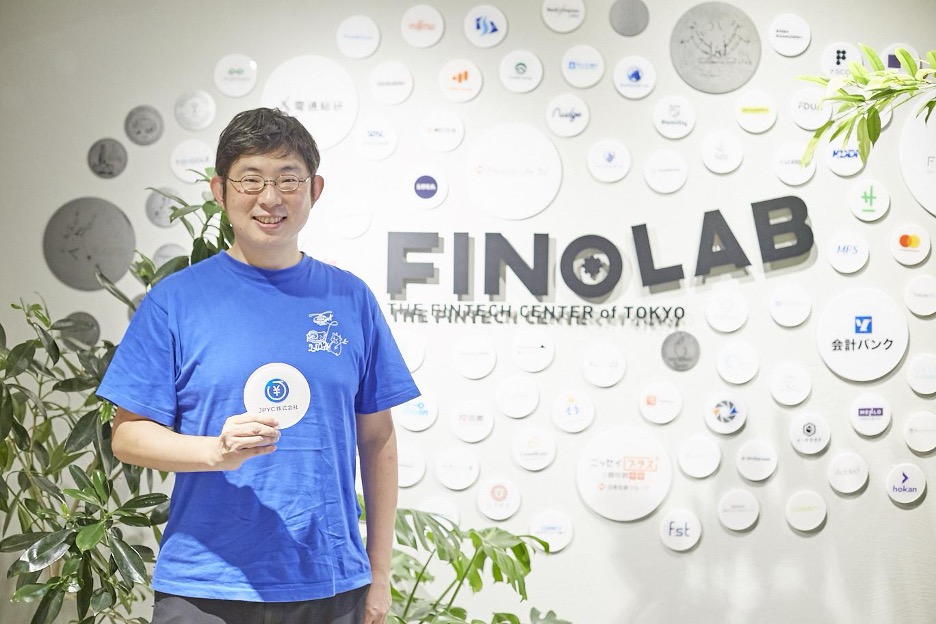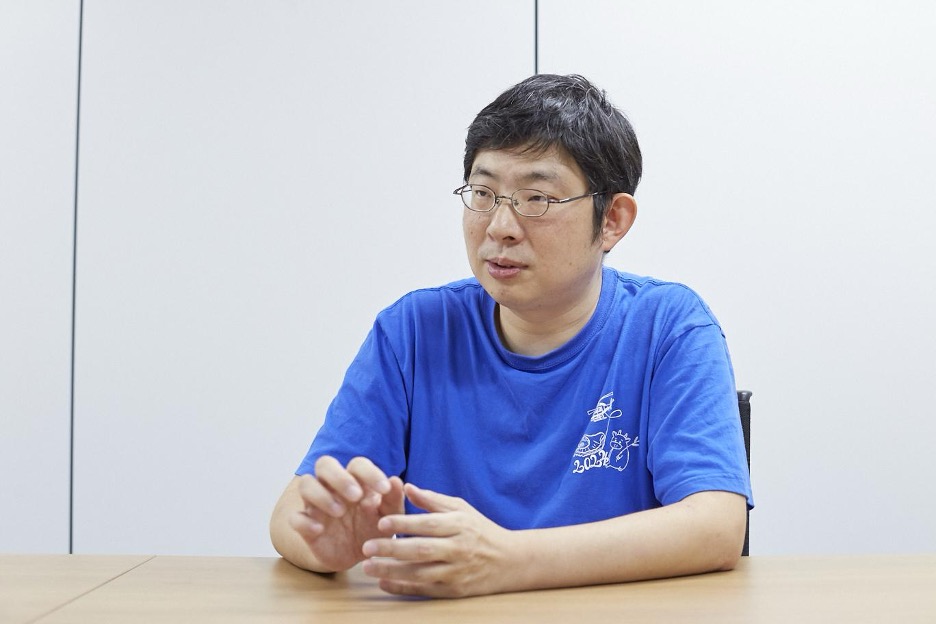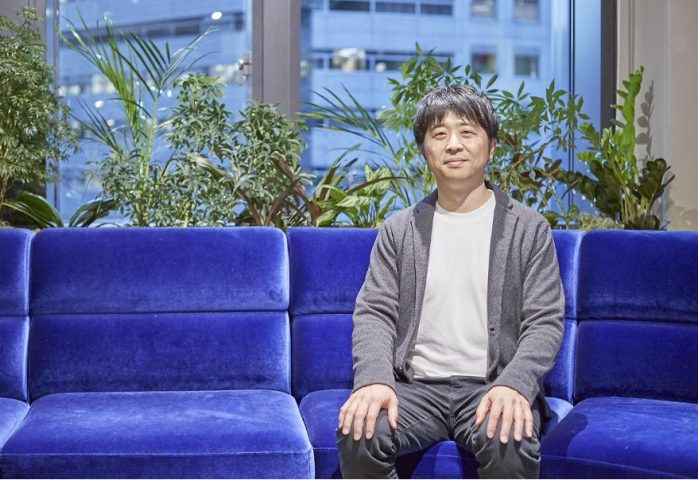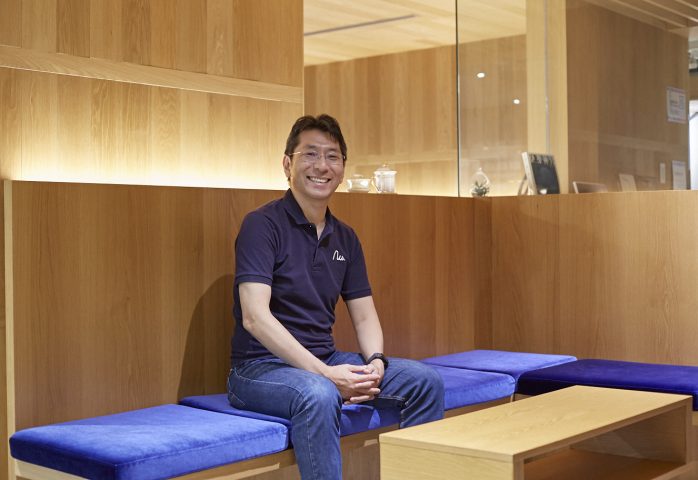INTERVIEWS
How Stable Coins Are Transforming Society: Innovation Envisioned by JPYC at FINOLAB

The cryptocurrency market continues to evolve, intertwining potential and challenges. What has gathered a special attention lately are the “stable coins.” By linking their value to fiat currencies, stable coins maintain price stability, distinguishing themselves from traditional cryptocurrencies. The coins are unlocking new possibilities in areas such as tax payments, incentives, and microtransactions. This article presents our conversation with Mr. Noritaka Okabe of JPYC Inc., the company behind Japan’s first yen-based stable coin, “JPYC,” to explore the innovative value and future potential of this new currency as it addresses societal challenges.
Why should one choose a “yen-based stable coin?”
― Can you explain the basic concept of a stable coin once again?
Stable coins are blockchain-based payment instruments whose value is tied to fiat currencies. They are being widely adopted in the United States already, and we anticipate that Japan is also about to enter a full-fledged phase of adoption.
― What is the rationale behind the adoption of stable coins?
Stable coins have existed since the mid-2010s, but their significant growth began between 2019 and 2020. Their biggest advantage is their price stability. Cryptocurrencies like Bitcoin are known for their extreme price volatility, but stable coins maintain a relatively “stable” value as they are pegged to fiat currencies. This stability renders them promising for use in payment systems, small international remittances, and as intermediaries in other cryptocurrency transactions, where they are expected to play a critical role.

―Are stable coins in circulation already?
Yes, they are. For example, in the United States, cryptocurrency exchanges offer trading pairs of Bitcoin and USD-backed stable coins, which are widely used as trading currencies.
―Why did JPYC choose to offer a yen-based stable coin when a USD-based coin exists already?
Japanese businesses and individuals need to conduct accounting and pay taxes in yen. Using USD-backed stable coins introduces exchange rate issues, complicating the accounting and tax processes. Given this, we determined that there is a clear demand for yen-based stable coins.
Currently, the issuance of JPYC stable coins amounts to approximately 3 billion yen, growing by more than 100 million yen each month. This growth rate highlights the rising demand for these coins.
Additionally, yen-based stable coins are more intuitive for Japanese users as a measure of value. For example, when asked, “How much is 100 dollars in yen?” Many people find it hard to grasp the value immediately without checking the current exchange rate. By contrast, yen-based stable coins allow for an intuitive understanding of value.
― Does that mean JPYC’s primary target is the Japanese market?
At this stage, the demand is primarily domestic. However, there is potential for use by foreign companies engaged in transactions with Japan. In the future, we anticipate it being used in countries with strong economic ties with Japan.
From Tax Payments to Corporate Use: New Possibilities of Stable Coins
― How is JPYC being used?
Initially, we launched JPYC as a prepaid stable coin. At the time, issuing stable coins in a funds transfer model or through banks was not permitted by law. However, the prepaid model faced relatively lenient regulations and fewer approval hurdles, so we decided to enter the market with it.
Moreover, under regulations, self-issued prepaid instruments under 10 million yen did not even require a formal notification. This made the market particularly accessible for startups like ours. Thanks to this approach, we were able to quickly enter the market and launch our services.

In terms of the transaction volume, JPYC is most used for tax payments. It has become an effective means of paying taxes, especially for individuals who hold assets in cryptocurrencies.
―How exactly is JPYC used for tax payments?
In Japan, capital gains from cryptocurrency sales are taxed at rates of up to 55%. Consequently, many high-earning cryptocurrency investors, often referred to as “crypto millionaires,” lend their cryptocurrency holdings and earn interest income in USD-based stable coins. By exchanging these stable coins for JPYC through overseas DeFi markets, they can meet their tax obligations in Japan.
―Are there other specific examples of JPYC use?
One notable example is its use in the GO Hey! app by Kajima Corporation. In the construction industry, where multi-layered subcontracting is common, JPYC is used to provide incentives to on-site workers. For instance, subcontracted workers who contribute to cleaning or safety management efforts receive JPYC as a reward.
Other examples include TIPWAVE, which enables JPYC to be used for tips or points on X (formerly Twitter) through an SNS account integration, and SPARKN, a platform that allows municipalities to offer incentives for idea submissions. These diverse use cases demonstrate JPYC’s versatility.
―What has driven the emergence of this diversity?
JPYC leverages its characteristics as “programmable money” — a digital currency that can incorporate various functions, such as automated payments and usage restrictions, through programming. By offering APIs and SDKs, we aim to enable many developers to use JPYC in their applications. As a so-called “colorless and transparent currency,” JPYC allows for an unrestricted innovation. We hope that even more use cases like the ones we’ve discussed will continue to emerge in the future.
Security and Regulatory Compliance Are Key to Adoption
― As usage scenarios expand, risks like money laundering and security issues have been pointed out to stable coins. How is JPYC addressing these challenges?
Any convenient payment method, not only stable coins, inherently carries the risk of misuse. Therefore, exchanges and issuers must act as gatekeepers, watching out for fraudulent transactions and suspending them if necessary. At JPYC, we combine AI-powered automated monitoring systems with manual checks to detect and respond to suspicious fund flows. The use of the blockchain technology ensures that all transactions are recorded and traceable, which is a significant advantage in enhancing security.

Safeguarding users’ assets is of utmost importance as well. To this end, in addition to the technical security measures I just mentioned, JPYC complies with legal requirements by depositing more than half of the issued amount as collateral with the Legal Affairs Bureau. Looking ahead, we are considering transitioning to fund transfer or trust operations, which would involve even stricter asset protection mechanisms to ensure the safety and security of user holdings.
― How does JPYC respond to changes in the regulatory environment?
We maintain a constant communication with the Japanese regulatory authorities, particularly the Financial Services Agency (FSA), as we advance our business. Legal frameworks surrounding stable coins are evolving, and we strive to align our business model with these regulations while continuing to innovate.
Japan’s approach to the stable coin sector appears to focus on consistently developing and, where necessary, relaxing regulations. Because this is part of the national strategy, we perceive these regulations to be well-balanced.
― How does Japan’s regulatory environment compare with that overseas?
Japan’s regulatory approach comprises not imposing restrictions for their own sake but fostering innovation while implementing the necessary safeguards. For example, in the United States, strict regulations are sometimes introduced abruptly. By contrast, Japan has adopted a more gradual approach, allowing businesses like ours to operate with a certain degree of predictability. Simultaneously, appropriate user protection measures are also introduced, contributing to a healthy growth of the market.
Stable Coins as a Solution to Business Problems
― What are JPYC’s strengths as a company?
First, the name “JPYC” is itself a major advantage. As a yen-based stable coin from Japan, it’s a very straightforward and memorable brand.
Additionally, we have a strong lead in intellectual property with robust patents like the one related to Invoice NFTs (Patent No. 7542890). These unique and practical innovations set us apart in the industry.
Furthermore, as a startup, we operate with a lean and efficient structure, giving us a significant cost advantage. Compared with larger companies, we can handle the same transaction volume at a lower operational cost, which is a key strength in maintaining competitiveness.
― Recently, investment from large companies has increased.
Yes, we’ve received investments from corporate venture capital arms of major companies, such as Persol Venture Partners and Densan Systems.
Persol, which is pursuing a new way of working under the Work and Smile slogan, is exploring innovative forms of labor in combination with Web3 technologies. For example, “sukima baito” (gap jobs), which have been attracting attention, could see significant improvements in the operational efficiency of payments for users by leveraging stable coins. As programmable money, we believe that stable coins can play a crucial role in realizing new workstyles and automated payroll systems.
Fintech’s Unique Environment Supported by FINOLAB
― Why did you choose to be based at FINOLAB?
I have founded three companies. When I started my second company, I was based at FINOLAB. This experience led me to choose it again.
The biggest attraction of FINOLAB is that it’s the “one and only place where you can connect with key players in fintech.” People from various industries are united by the common goal of overcoming challenges through fintech, thereby creating an incredibly positive and forward-thinking environment.

―What specific benefits have you gained from being at FINOLAB?
For example, when we were obtaining our financial services license from the FSA, the physical security and access control requirements were nearly fully met by being based at FINOLAB. Setting this up individually would have been costly, so this was a significant advantage.
Networking has also been incredibly beneficial. Through FINOLAB, I’ve met many people, and I still maintain good relations with them. For instance, the Meetup with FSA event allowed us to have direct discussions with senior officials from the FSA, and we continue to have regular exchanges through FINOLAB.
As I mentioned earlier, in emerging areas like the stable coins, interacting with regulators is crucial. Through FINOLAB’s community, we’ve learned from the experiences of other companies and worked together with regulatory authorities, allowing us to drive innovation while ensuring the proper regulatory environment.
Additionally, we’ve been able to use FINOLAB’s event space for company-wide meetings, which provides valuable opportunities for our team to gather.
Vision for Social Transformation through Stable Coins
― What are the future growth projections for stable coins, and what is JPYC’s goal?
Research indicates that the global issuance of stable coins will reach approximately 420 trillion yen in the next five years. Considering factors like Japan’s GDP, JPYC aims to achieve an issuance of approximately 30 trillion yen within this timeframe.
― That sounds like a huge amount!
I believe that whether this goal can be achieved largely depends on the interest rate differential. If the current low-interest rate environment persists, the interest rates in the DeFi space will be approximately 3–5%, making it highly likely that more funds will flow into stable coins. With the existing interest rate differential, a significant opportunity definitely exists.
― Your ultimate goal seems to be to issue an IPO.
An IPO is not a goal in itself but rather, a new starting point for JPYC. By going public, we will gain an increased social trust, which will likely accelerate the adoption of our stable coin by large enterprises. Moreover, the capital raised through the IPO will allow us to invest further in growth. However, this is not just about business expansion; we are also committed to taking on the larger responsibility of contributing to Japan’s financial infrastructure.
―Finally, could you share a message for those in the fintech industry or those looking to take on new challenges?
The fintech space, especially the stable coin sector, still has plenty of room for innovation. What’s important is not only technological advancement but also connecting these innovations to solving real-world socioeconomic issues. JPYC aims to build a more efficient and transparent economic system through stable coins, but there are many other approaches to achieving this as well. Fintech has the potential not only to change finance but also to transform society. We are committed to supporting those who are taking on this challenge.
企業情報
JPYC Inc.
- CEO
- Noritaka Okabe
HEAR MORE
-

Ecrowd Inc.
“Ecrowd,” an equity crowdfunding that connects startups with individual investors. Taking full advantage of FINOLAB to design a “sustainable triple-win” world
-

luca.inc
Transforming conventional investment practices in Japan through the democratization of alternative investments: A closer look at LUCA’s vision for an “alternative investment platform from Japan”
-

Nudge Inc.
Innovations of “Nudge,” a credit card that encourages cashless payments among the younger generation: Creating the financial experience of the future courtesy of FINOLABInnovations of “Nudge,” a credit card that encourages cashless payments among the younger generation: Creating the financial experience of the future courtesy of FINOLAB